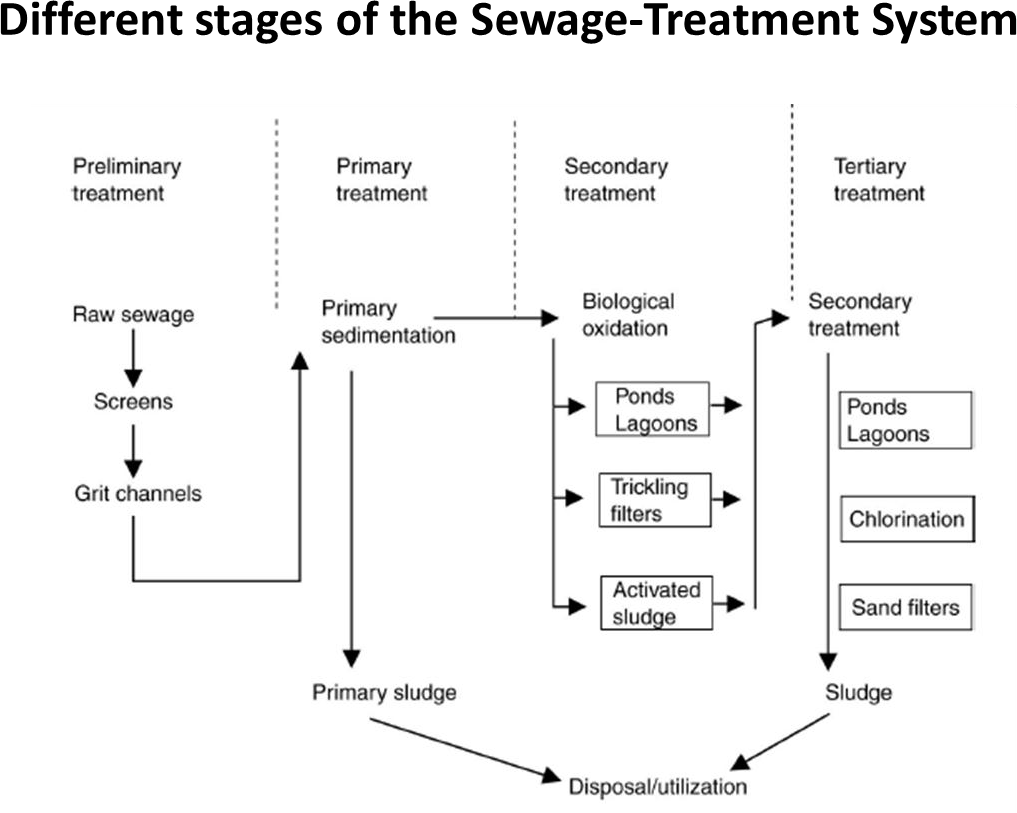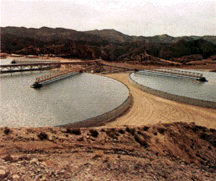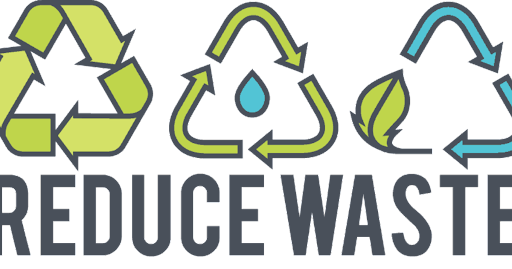Table of Contents
SLUDGE TREATMENT


Sludge
Sludge refers to the residual, semi solid material left from industrial wastewater or sewage treatment processes. Satisfactory treatment and disposal of the sludge can be the single most complex and costly operation in a treatment system.
Sustainable sludge handling may be defined as a socially acceptable, cost effective method that meets the requirement of efficient recycling of resources while ensuring that harmful substances are not transferred to humans or the environment.
Sources and Characteristics of Various Sludges
1) Grit chambers
Sand, broken glass, nuts and bolts etc (Not true sludge as the material is not fluid). Generally trucked to a landfill as it is not biodegradable.
2) Primary sludge
Contains 3 to 8% solids (1 % solids is equal to 1g per 100ml sludge volume). About 70% organic material and is highly odoriferous.
3) Secondary sludge
Consists of wasted microorganisms and inert materials. Solids are about 90% organic. Wasted Activated Sludge contains 0.5 to 2% solids while Trickling filter sludge contains 2-5% solids.
4) Tertiary sludge
Sludge characteristics depends upon the nature of process. For example, phosphorous removal will result in a chemical sludge that is more difficult to treat. Denitrification sludge is similar in characteristics to activated sludge.
The basic processes for Sludge treatment are as follows:
- Thickening: Separating as much water as possible by gravity or flotation.
- Stabilization: Converting the organic solids to a form that can be handled or used as soil conditioner without causing health hazards.
- Conditioning: Treating the sludge with chemicals or heat so that the water can be readily separated.
- Dewatering: Separating water by subjecting the sludge to vacuum, pressure or drying.
- Reduction: Converting the solids to a stable form by wet oxidation (chemical oxidation process) or incineration.
Basic Sludge Handling Alternatives
1) Thickening
The goal of thickening is to increase the solid content percentage of sludge by removing as much water as possible. Volume reduction of 30 to 80 percent may be achieved. The process offers a low cost solution to reduce sludge volume to be dealt with by a factor of two or more.
Methods:
- Gravity Thickening
- Flotation Thickening
- Centrifugation
- Rotatory Drum Thickening


2) Stabilization
The principal purposes of sludge stabilization are to breakdown the organic solids biochemically to reduce pathogens, offensive odours, potential for putrefaction and production of biogas.
The basic stabilization processes in use include the following:
- Aerobic Digestion
- Anaerobic Digestion
3) Aerobic Digestion
- Extension of activated sludge. Accomplished by Culturing aerobic heterotrophs in an environment
- containing an organic source then
- followed by sedimentation.
- Supernatant (effluent) from clarifier goes back to head of plant as it is high in BOD (500mg/L) and total-P (100mg/L).
4) Anaerobic Digestion
- A process that uses bacteria in an oxygen free environment.
- These bacteria converts volatile solids into carbondioxide, methane and ammonia.
- 2 stages: acid fermentation
- followed by methane production As with aerobic digestion, supernatant goes to headworks.
- Acid-forming bacteria
- Methane forming bacteria
- CH4, CO2 and other end products
- Organic Acids
- Complex organics
5) Conditioning
In this process sludge solids are treated with chemicals or other means to prepare sludge for dewatering. Conditioning facilitates the separation of solids from liquid. Such as addition of coagulants, polymers or ash from incinerated sludge.
Another conditioning approach is to heat the sludge at high temperatures (175-230 oC) and pressures (1000-2000 kPa). Under such conditions, water that is bound up to solids is released thus improving dewatering characteristics. The process has the disadvantage of relatively complex operation and maintenance.
6) Dewatering
A physical unit operation used to reduce the moisture content of sludge for the following reasons:
- Lower cost for trucking sludge to the ultimate disposal site.
- Increasing energy content for incineration by lowering water content.
- Rendering the sludge odour and putrescibility.
7) Sludge Drying Beds
Most popular method of Sludge Dewatering. Sludge is pumped onto drying bed surface and allowed to dry to desired final solid concentration. Dewatered sludge is removed either mechanically or manually.
Sludge is applied on the sand bed and is allowed to dry by evaporation and drainage of excess water over a period of several weeks depending on climatic conditions. Bacterial decomposition of the sludge takes place during the drying process while moisture content is sufficiently high.
8) Belt Filter Press
A belt filter press is a bio-solids or sludge dewatering device that applies mechanical pressure to a chemically conditioned slurry, which is sandwiched between two tensioned belts, by passing those belts through a serpentine of decreasing diameter rolls.
9) Sludge disposal
Final or ultimate disposal of sludge, which cannot be reused, is by land filling or incineration. The sludge disposal and transformation methods include the following:
- Thermal Drying
- Wet Oxidation
- Incineration
- Landfill Disposal
10) Thermal Drying
Thermal drying is a highly flexible process, easily adapted to produce pellets for agriculture reuse, landfill disposals or incineration. The process applies heat to evaporate moisture. The produced pellets can then be used as fuel for cement kilns, boilers or heaters.
11) Wet Air Oxidation
The process is based on the capability of dissolved or particulate organic matter present in liquid to be oxidized at temperatures in the range of 100-374 oC (water critical point). Oxidation is accelerated by the high solubility of oxygen in aqueous solutions at high temperatures.
12) Incineration
Sludge incineration destroys organic substances and pathogenic organisms through combustion obtained in the presence of excess oxygen. Incineration is the sludge stabilisation process which provides the greatest volume reduction. The residual ashes volume is usually less than 4% of the dewatered sludge volume fed to incineration.
13) Landfill Disposal
It is a technique for safe disposal of solid urban refuse onto soil, with no damage to public health. Engineering methods enable waste disposal confined to least possible area covered with soil layer after each working day. Anaerobic biodegradation takes place in sludge generating several by- products including methane.









